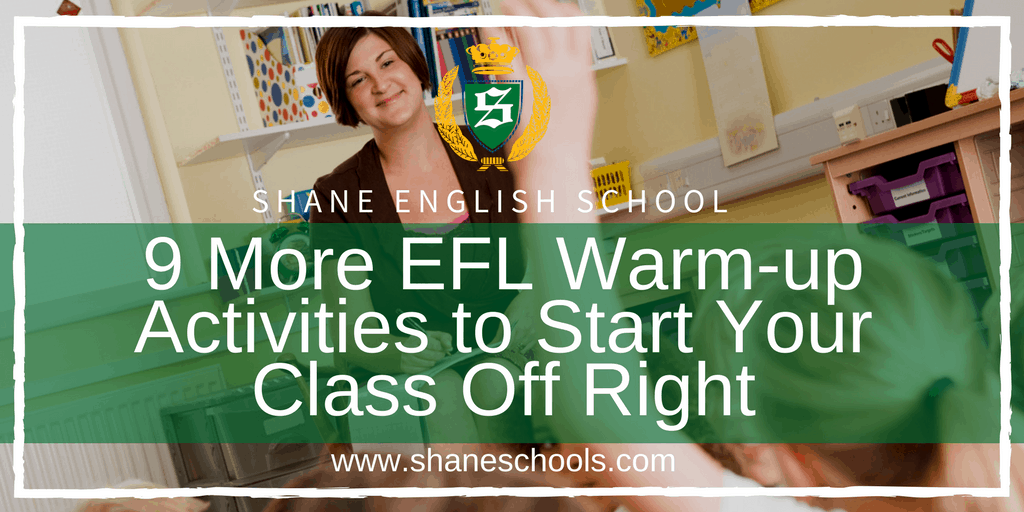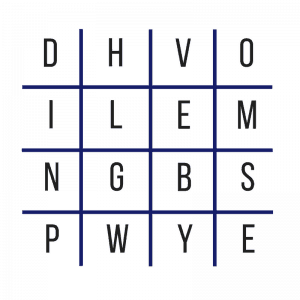[vc_row][vc_column][vc_column_text]It’s always a good idea to have some EFL warm-up activities in your back pocket
We recently published 5 Warmers to Switch Students’ Minds to English. It barely scratched the surface of all the short, fun activities that can be done as a lead-in to a lesson, or just for fun. So here are some more great ideas!
Board Races
Every class I have been in absolutely loves board races! This even includes adults, as long as it’s done more sparingly. The great thing about this is that there are lots of ways to twist it so that it can fit the content you are reviewing or want to use. Below are some of my favourites:
- Have the first person write a word. The second person on the team must then write a word beginning with the last letter of the first word, and so on. For example, a chain would look like this: green-new-went-toilet-touch-hot-telephone. You can make it more complex by playing rounds that have rules like at least 5 letters, or only adjectives.
- Draw one ladder per team with a set number of rungs and have each team member race to the board to write a word based on a topic, for example, school subjects. You could give one point per subject and one point for spelling.
- Make a PowerPoint with some pictures, perhaps some vocab from a previous lesson, and show the picture to one member of each team and they have to write what it is as fast as they can.
Letter Scramble
If you’re looking for a quieter warm-up, this is a good one. Put a box-like shape of letters on the board, 4×4 works best, and tell the students they need to come up with as many words as they can using the letters. It would look something like this:
Categories
If you have a larger group, it may be easier to make them stand, but if you have a good memory, then they can stay seated. Name a category. Some good ones are animals, countries, and things in the classroom. Going around the circle, each person must say a word within that topic. If they repeat something that has already been said, they are out. If they take too long, they are out (use your fingers to count down).
Backs to the Board
Tell the class you will write two words on the board. One will be an adjective, and one will be a noun. Set a chair in front of the board so that if someone is sitting there, they will be facing the class and not the board, hence the name of the game. The other members can use either words or actions to try to get the one sitting in the chair to say what’s on the board.
For example, if you write “sad baby” the team can either say something like “opposite of happy” and “a very small child”, or they can make an exaggerated sad face and then pretend to have a baby in their arms, or a combination of both spoken words and gestures. Use a timer to make it more intense!
Draw it
Give students a half sheet of blank paper and describe a scene. They have to draw it. Hold a class vote on the best picture. This is a good lead-in activity to the textbook, if the picture you describe is the opener to a unit for example.
Another option, but it’s a longer activity. Ask students to draw a simple picture of whatever they want on one half of the paper, and on the other half, they write the description of what they drew. Tear the paper in half and redistribute the written descriptions randomly. Students try to draw what their peers have described and compare it to the original! It works well as an intro activity to a writing class, showing why written language needs to be clear, etc.
Fastest Line Order
A quick warmer: Have students make two lines and tell them how you want them to line up. It could be from shortest to tallest, by age, by birthdays, whatever you can think of! Fastest correct line wins.
20 Questions
This one is fairly common, so you may have heard of it before, but it’s always good to have in your back pocket. Think of something, anything, and have the students ask you questions where the answer is yes/no only. They have 20 questions to figure out what you are thinking of.
Musical Chairs/A Great Wind Blows
For younger groups, play musical chairs with an educational twist. Put flashcards on the chairs that the students must say when the music stops, or ask the person standing a question. If they answer correctly, maybe they can get a second chance and stay in!
For older groups, play “a great wind blows”, where there is one less chair than the number of students and a statement is said out loud, for example, “I have glasses”, or if they are a higher level, “a great wind blows for everyone who wears glasses”. Students who have glasses have to get up and find a new seat. The one left standing says the new sentence.
Tongue Twisters
Display or write up 3 or 4 tongue twisters at an appropriate level for that class. Divide the students into small groups of the number of the tongue twisters. Go over pronunciation, give them time to practice, and then time each group to see who can say them the fastest with the least amount of mistakes!
About the Author
Yvette Smith is an English teacher in Vietnam who also does freelance writing on a variety of topics.[/vc_column_text][/vc_column][/vc_row][vc_row][vc_column][vc_separator][/vc_column][/vc_row][vc_row css=”.vc_custom_1534752216040{background-color: #ededed !important;border-radius: 2px !important;}”][vc_column width=”2/3″][vc_column_text]
Click here to take your teaching to the next level with 20% off a TEFL certificate from ITTT.
[/vc_column_text][vc_column_text]
Looking for teaching opportunities? Check out Saxoncourt Recruitment for teaching jobs abroad.
[/vc_column_text][/vc_column][vc_column width=”1/3″][vc_single_image image=”11062″ img_size=”medium” alignment=”center” onclick=”custom_link” link=”https://www.teflcourse.net/?cu=DYAJM2017I”][vc_single_image image=”10436″ img_size=”medium” alignment=”center” onclick=”custom_link” link=”www.saxoncourt.com?utm_source=Shane%20Schools&utm_medium=blog%20post&utm_campaign=Shane%20Schools%20blog%20footer”][/vc_column][/vc_row][vc_row][vc_column][vc_separator][/vc_column][/vc_row]


